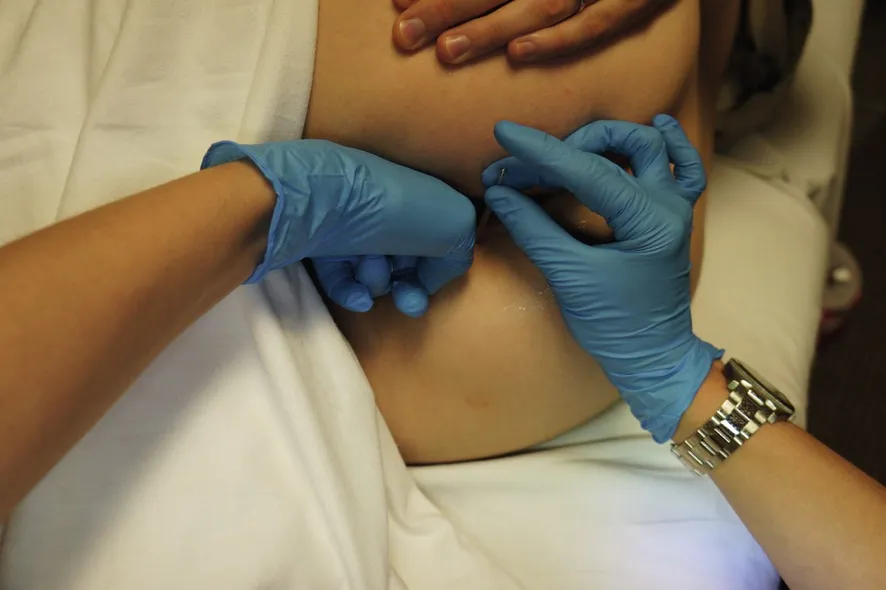If you’ve been dealing with stubborn hip pain or tightness that just doesn’t quit — even after stretching, foam rolling, or massage — there’s a good chance your hip flexors are behind it. And if you’ve been digging into treatment options, you might be wondering: Can you dry needle hip flexors?
Short answer: Yes, you absolutely can. And in the hands of the right provider, it can make a world of difference. Dry needling is gaining traction as a go-to therapy for muscle dysfunction, pain, and mobility issues. But like any treatment, it’s not just about if you can do it — it’s about why, how, and when to use it.
Understanding the Hip Flexors (And Why They Cause So Much Trouble)
The hip flexors are a group of muscles located at the front of your hip — mainly the iliopsoas, rectus femoris, sartorius, and tensor fasciae latae (TFL). These muscles play a huge role in lifting your knees, walking, running, and basically keeping your hips mobile and your posture upright.
The thing is, modern life isn’t exactly kind to them. Most of us sit for hours — at desks, in cars, on the couch — and that tightens these muscles over time. Combine that with running, lifting, or cycling, and you’ve got a recipe for cranky hip flexors.
When these muscles get tight or develop myofascial trigger points, you’ll often feel:
- A deep, nagging ache in the front of your hip or groin
- Pain with standing after sitting
- Limited range of motion
- Pain with lunges or lifting the knee
Sound familiar? If you’re nodding yes, it might be time to consider dry needling.
What Is Dry Needling?
Dry needling is a technique used by licensed physical therapists to target and release muscle trigger points. These are tight, irritable spots within a muscle that can refer pain, reduce flexibility, and limit function.
Unlike acupuncture — which is based on Eastern medicine and energy meridians — dry needling is rooted in Western anatomical science. It’s all about improving muscular function and reducing pain by releasing these “knots” or trigger points with a thin, solid filament needle.
When done correctly, it can relax the muscle, improve blood flow, and jumpstart the healing process. So yes — you can dry needle hip flexors, and when performed by a trained expert, it can offer huge relief.
Common Causes of Hip Flexor Pain
Before we jump into how dry needling helps, it’s worth understanding why those hip flexors are giving you grief in the first place. The causes usually fall into one of five categories:
1. Injuries
Strains or tears in the hip flexor muscles, often from explosive sports or overuse, are a common source of pain. This can create localized tightness and compensatory issues in nearby areas.
2. Medical Conditions
Conditions like hip labral tears, bursitis, or femoroacetabular impingement (FAI) can mimic or cause hip flexor pain, and often overlap with muscular dysfunction.
3. Structural Issues
Pelvic tilt, leg length discrepancies, or postural imbalances can place chronic stress on the hip flexors, forcing them to work harder than they should.
4. Lifestyle & Health Choices
Sitting too long, skipping proper warm-ups, or poor sleep and recovery can leave your muscles shortened and overworked.
5. Nerve-Related Conditions
Sometimes, issues with the lumbar spine or femoral nerve can refer pain to the hip area, causing a chain reaction of tightness and dysfunction in the hip flexors.
If the root cause isn’t addressed, the cycle repeats — tightness leads to pain, which leads to compensation and more tightness.
Diagnosis: Do You Actually Need Dry Needling?
You might be thinking: “I stretch every day. Shouldn’t that be enough?”. Unfortunately, not always. When a muscle has trigger points or chronic tightness, stretching alone often won’t cut it.
A proper diagnosis starts with:
Self-Assessment
- Do you feel pain when lifting your leg while lying down?
- Is one hip tighter or more restricted than the other?
- Does foam rolling make it feel temporarily better but not fix it?
If yes, that’s a sign you may have trigger points that dry needling can address.
Professional Evaluation
At Revolution Rehab, we don’t just poke and hope. Our licensed therapists assess posture, movement patterns, strength, and flexibility to pinpoint the exact muscles contributing to your pain.
Red Flags
If you’re experiencing shooting pain, numbness, or weakness down your leg, or can’t bear weight on one side, you need medical evaluation first. We always rule out serious conditions before beginning dry needling or any manual therapy.
Dry Needling for Hip Flexors: What to Expect
Dry needling the hip flexors is a very targeted process. These muscles — especially the iliopsoas — are deep, and accessing them safely requires expert knowledge of anatomy and needle technique.
Here’s what a typical session might look like at Revolution Rehab:
- Assessment: We identify which muscles are causing the issue.
- Needling: The therapist inserts a fine needle into the trigger point. You may feel a twitch response or a deep ache — that’s normal.
- Relief: Muscles often relax immediately, allowing greater range of motion.
- Follow-Up Care: We combine needling with movement and mobility work to make sure the results last.
Most patients notice improvement after 1–3 sessions, especially when paired with other treatments like manual therapy, exercise, and corrective strategies.
Other Treatment Options for Hip Flexor Pain
Dry needling is powerful — but it’s not a standalone fix. At Revolution Rehab, we build a full plan to address every part of your recovery.
Home Remedies
- Heat therapy to loosen tight muscles
- Gentle stretching like the kneeling hip flexor stretch
- Self-massage with a lacrosse ball or foam roller
Physical Therapy
Targeted exercises to build hip strength, improve core control, and fix imbalances. We also focus on functional mobility — so your hips don’t just feel better, they actually move better.
Medical Interventions
In rare or advanced cases, a referral to an orthopedic specialist or imaging may be recommended. Some patients benefit from injections, especially if there’s inflammation or underlying joint issues.
How to Prevent Hip Flexor Pain
Once you’re out of pain, the next step is keeping it that way. Prevention is all about consistency.
Move More (And Sit Less)
Break up long sitting periods with movement every 30 minutes. Use a standing desk if possible.
Strengthen the Posterior Chain
Glutes, hamstrings, and core muscles need to be strong to balance out the front of your hips. Don’t skip deadlifts, bridges, or bird dogs.
Improve Mobility
Incorporate dynamic stretches before workouts and static stretches after. Focus on hip mobility, spinal alignment, and thoracic extension.
Train Smart
Warm up thoroughly, don’t overdo volume, and give your body enough rest. Muscle recovery matters just as much as training.
When Should You Call Revolution Rehab?
If you’ve tried stretching, rolling, and rest and your hip pain is still holding you back, it’s time to get help.
At Revolution Rehab, our team specializes in advanced manual therapy techniques — including dry needling — designed to treat the root cause of pain, not just the symptoms. We work with athletes, desk workers, weekend warriors, and everyone in between.
Whether your goal is to get back to the gym, the field, or just walking pain-free — we’ll build a personalized plan that works.
Don’t wait it out — let’s fix it. Book your dry needling evaluation at Revolution Rehab today and start moving like yourself again.


